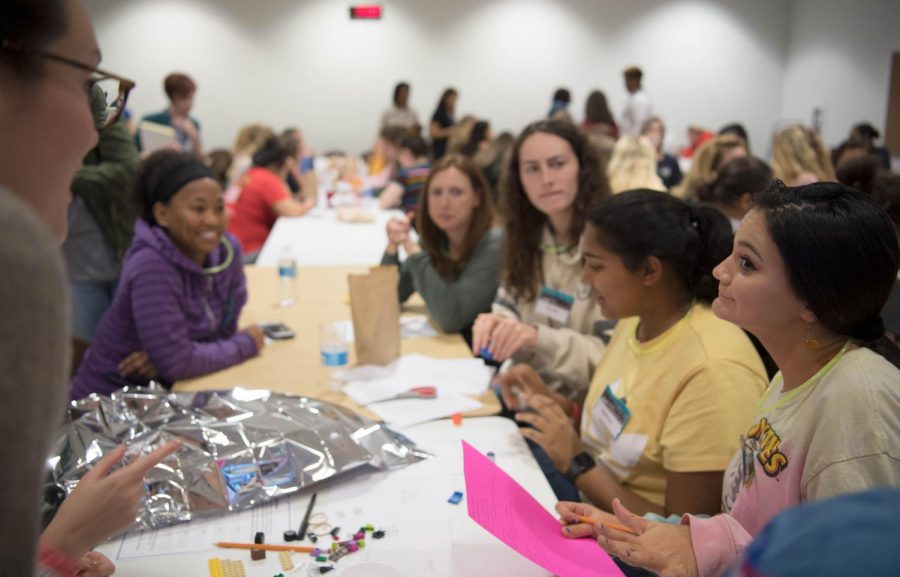print(“Women in STEM”);
October 9, 2021
Gender equality is a basic human right. It is quite literally one of the fundamental principles that make up the United Nations. Yet, gender inequality still persists.
The gender gap in STEM subjects is perhaps one of the most apparent effects of the lack of gender equality. The discrepancy in opportunity, attitudes, and income makes it difficult for women to be equals to men in the STEM workforce.
“Women make up only 28% of the workforce in science, technology, engineering, and math (STEM), and men vastly outnumber women majoring in most STEM fields in college,” stated the AAUW, American Association of University Women. “Engineering and computer science — two of the most lucrative STEM fields — remain heavily male-dominated. Only 21% of engineering majors and 19% of computer science majors are women.”
“125 million girls of primary and secondary age in the developing world are out of school.” outlined Unicef. The exclusion of girls from education explains a major reason for the gender gap in STEM. It is clear that the exclusion of girls in educational settings begins from childhood and only further solidifies over their lifetimes.
Another explanation comes from the National Inventors Hall of Fame that found a correlation between females’ lack of confidence caused by puberty years and the absence of their participation in STEM subjects.
“Around three in four teen girls worry about failing. Between ages 8 and 14, girls’ confidence levels drop by 30 percent. Between their tween and teen years, girls’ confidence that other people like them fall from 71 percent to 38 percent — a 46 percent drop. Between ages 12 and 13, the percentage of girls who say they’re not allowed to fail increases by 150 percent,” claims the National Inventors Hall of Fame.
In terms of income, the U.S. Department of Commerce has found that there is a “14% gender wage gap: For every dollar earned by a man, women in STEM earn $0.86.”
Gender inequality is a widespread issue that is broadly discussed and approached. At AHS, ‘Arcadia Girl Up’ is a club that empowers people of every identity and strives to create global equality in education, leadership, economic independence, and safety. Girl Up discusses gender-based issues that impact our community, as well as current events and global issues that affect women.
Furthermore, Mr. Reiske, a computer science teacher at AHS, revealed that “the females that take our classes perform just as well as their male counterparts, but getting females to enroll remains a challenge.” He was even generous enough to include an email from CollegeBoard.
“We want to let you know that your school came very close to earning a prestigious College Board award that recognizes diverse AP® computer science programs. The AP Computer Science Female Diversity Award goes to schools that have either 50% or higher female representation in one of the two AP computer science courses, or a percentage of the female computer science examinees meeting or exceeding that of the school’s female population,” commented College Board. It is evident that AHS is performing well compared to most schools, however, AHS is hoping to reduce the gender gap in their STEM classrooms even further.
Mr. Zurla, another computer science teacher at AHS, also detailed his first-hand experience with the gender gap. He recalled, “My oldest daughter took APCSA [AP Computer Science A] ]at Glendora HS her senior year but only after I begged her to do so. She did so well that she is now majoring in CS at Penn State. [It] just took some encouragement.” So perhaps that is what needs to happen to close the gender gap– increased support to act as a push in the right direction.
Photographic Courtesy of WIKIMEDIACOMMONS.COM

